Home > Articles > Special Series > Bill Emerson and Sweet Dixie
Bill Emerson and Sweet Dixie
In the early part of the new century, Bill Emerson was not as active in musical pursuits as he had been since he first picked up a banjo in the mid-1950s. When he did decide to get back to recording and performing music, he called on Wayne Taylor, Pat White, and Joe Wheatley—all from the Navy band—to help him start recording a new project under the name Bill Emerson and the Sweet Dixie Band.
The band name was recommended by Bill’s old boss Jimmy Martin. In an interview that was conducted with Emerson at his home in Vienna, Virginia by George McCeney for the Bluegrass Music Hall of Fame and Museum’s Oral Histories Project in May of 2006, Bill explained that shortly before Jimmy Martin’s passing (2005), Emerson and Vassar Clements had traveled to Bean Blossom to perform with Martin. It was there that Jimmy Martin said to Emerson, “Big E, you ought to put a band together and call it Sweet Dixie.” In 2006, Emerson did just that.
The Sweet Dixie Band
Bill’s originally concept for the first Sweet Dixie Band recording was to not form a four or five piece band in the traditional sense. His vision was to have a large pool of musicians who he could draw from. In the Oral Histories Project interview, Emerson said, “The concept is that it is not just four or five guys. It is a whole bunch of people. One of the reasons why is that when you buy a Jimmy Martin album, all of the songs are by Jimmy Martin. After you get through the fourth song, you might take the needle off and go do something else for a while. It doesn’t hold your interest because it is so much alike all the way through. I wanted to do a project that was just about as diversified as you could make it to where nothing sounds alike, everything is different.
“It will also be good because the group can go out and work in a number of different configurations. We are not stuck with Bill, Charlie, Doyle, and Bill Yates. We’ve got maybe twenty people to draw from. Pat White, Joe Wheatley, Wayne Taylor and I began this project a couple of months ago. It is an interesting project and there is no rush to do it. There is no financial crisis we have to deal with. It is something that I enjoy working on.”
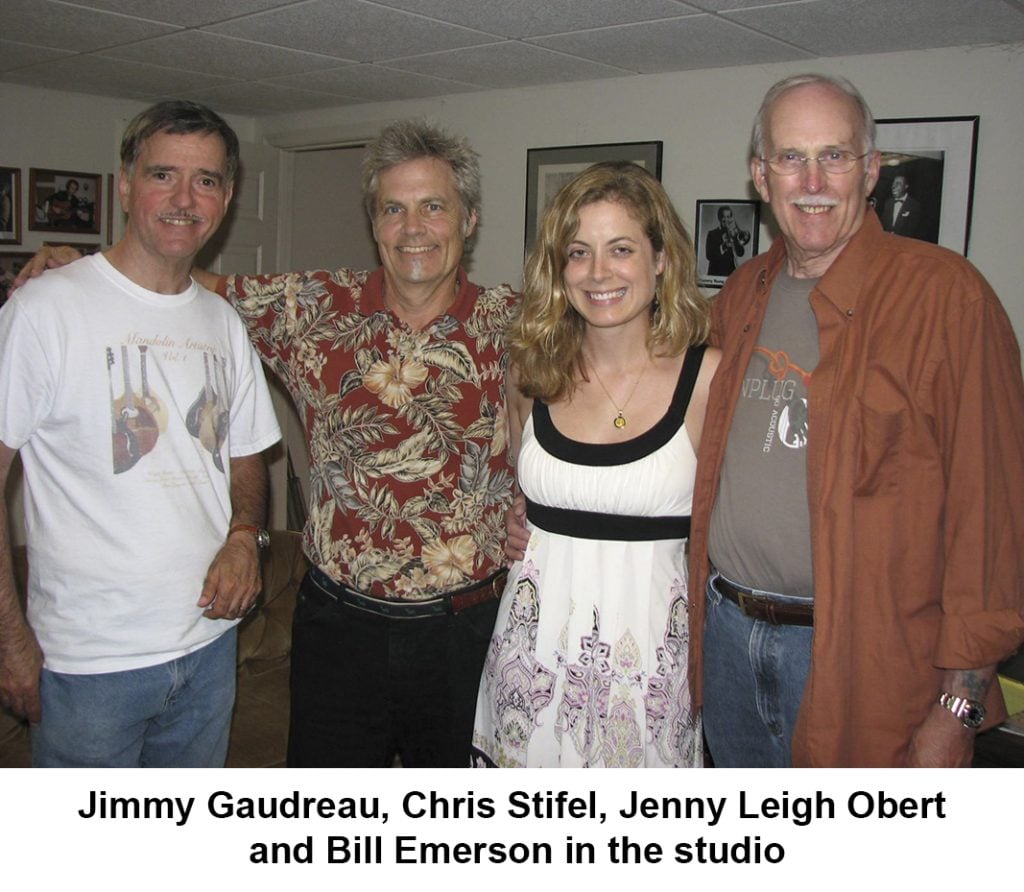
Musicians who Emerson brought in to record on the first Sweet Dixie Band project (titled Bill Emerson and the Sweet Dixie Band) included: Frank Solivan II, Joe Wheatley, Pat White, Scott Linton, Dudley Connell, Paul Williams, Gary Ferguson, Dave Miner, Con Burch, Andy Ball, Ray Legere, Wayne Taylor, Jimmy Gaudreau, Randy Waller, Brad Corbin, Pete Goble, Darren Beachley, Tony Rice, Mark Newton, and Barry Tuttle. Many of the musicians who contributed to this recording were people Emerson had worked with earlier in his career, both inside and outside of the Navy.
Frank Solivan II (here after referred to as Frank Solivan) was in the Navy band Country Current—along with Pat White, Joe Wheatley, and Wayne Taylor—when he got the call from Emerson to be a part of the Sweet Dixie Band project. Solivan played both guitar and mandolin on two cuts and sang lead on his original song “All My Ramblin’ Days Are Through.” Regarding his work on this album, Frank said, “Bill called and asked if I wanted to be on the recording and asked what I wanted to record. He told me that he was looking for something that was traditional bluegrass. I told him that I had an original song and I sent it to him. After listening to it, he called me back and said it was perfect.”
After the record was released, Solivan remembers playing a few shows with Bill in support of the album. He said that one of those shows was at an IBMA Showcase in Nashville in 2008 and there is a video of one of the tunes they played on that show on YouTube (https://www.youtube.com/watch?v=TNCLiLy8NsQ).
Later, in 2011, Emerson joined Frank on stage to help celebrate Frank’s birthday. Others who joined them on stage on that occasion were Wayne Taylor, Jimmy Gaudreau, Mike Mumford, and Lincoln Meyers. There is also a YouTube video of that performance (https://www.youtube.com/watch?v=c83W0FLRXso).
After Solivan left the Navy band he formed his own highly successful bluegrass band called Frank Solivan and Dirty Kitchen. Frank said, “After I started my band, Bill called me out of the blue and said that he liked what I was doing. He said, ‘Keep after it.’ He was always very encouraging.” Frank added, “I talked with Bill shortly before he passed and he was still very fired up about playing.”
The song selection on the Bill Emerson and the Sweet Dixie Band recording ranged from “Ridin’ My Thumb to Mexico,” by Johnny Rodriguez to “Hills of Roane County” by the Stanley Brothers to “Keep On The Sunny Side of Life” by the Carter Family to “Linda Lou” by Robert Carl Butler, and Randall Hylton’s “Cold Sheets of Rain.” Several of the performers on the record brought in their original songs and tunes, such as Gary Ferguson’s “A Little Rain,” Pete Gobel’s “Fiddler’s Green,” and “There’s No Room Inside Your Heart,” Con Burch’s “Maybe Someday,” and “Sweet Dixie Girl,” Frank Solivan’s “All My Ramblin’Days Are Through,” and Bill Emerson’s “Three Day Beard and A Rusty Jeep.” To round it out, there was even a John Prine song, “All The Best.”
Southern
Between the time he recorded the first Sweet Dixie album in 2006 and the second (titled Southern and recorded in 2009) Bill Emerson also performed on albums by Tony Trischka, Wayne Taylor, Con Burch, Jimmy Gaudreau, and Angelica Grimm. Emerson had also put together a band that could tour in support of the first album. The core of that band included Bill Emerson (banjo), Wayne Lanham (mandolin), Teri Chism (bass) and Wayne Taylor (guitar). After about a year, Tom Adams replaced Wayne Taylor. Additionally, Con Burch would sing with the band.
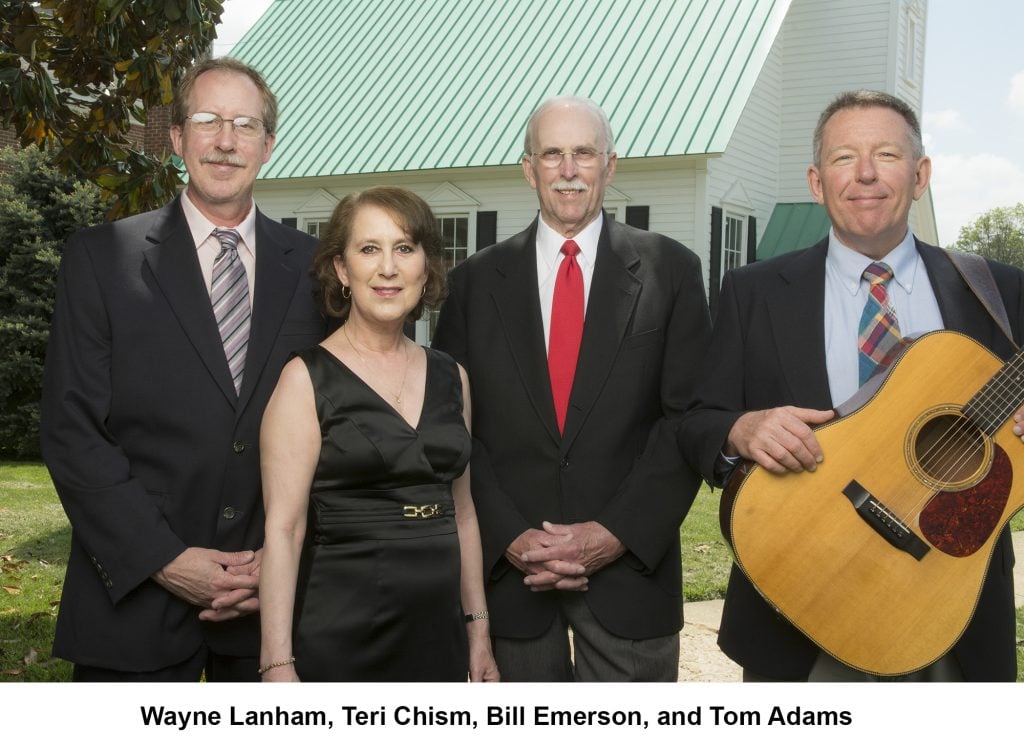
Teri Chism said that she and her husband Wayne Lanham had been performing with Emerson’s old music partner Cliff Waldron up until the time Cliff ran into some health issues and decided to retire from performing. Teri remembers, “Bill found out that Cliff had retired and he called Cliff to ask if he could hire Wayne and I.” Wayne said, “We met Bill at Watermelon Park when they had the Country Gentlemen 50th Reunion show. He mentioned to us that he was looking to put a band together and asked us if we would be interested. When we told him that we were interested, I think that is when he called Cliff and made sure that it would be OK with him.”
Lanham recalls that Bill was looking to put a band together to support the album. He said, “I think it was supposed to originally be for just one season, but Teri and I ended up staying with Bill until he stopped performing in 2016. Then we continued to record with him.”
As stated previously in this article, Bill’s concept was to tour with a number of different band configurations in support of the album, but Lanham said that although that was the plan, it didn’t work out. The band Bill put together stayed consistent for the first year and only changed when Wayne Taylor left and Tom Adams joined. While guitar and fiddle players would move in and out of the band over the years, Bill, Wayne, and Teri formed the consistent core of the band.
In 2009, Emerson took his band into the studio to record his next band project. Bill Emerson and Sweet Dixie’s Southern was recorded at George Hodgkiss’ Phoenix Studios in Browntown, Virginia. This time, the band lineup was more traditional. The studio band included Bill Emerson (banjo), Tom Adams (rhythm guitar), John Miller (lead guitar on two cuts), Wayne Lanham (mandolin), Teri Chism (bass), and either Frank Solivan or Ricky Simpkins on fiddle. Also included was Janet Davis on second banjo on a song that she wrote (“Grandma’s Tattoos”). Tom Adams sang most of the lead parts while Wayne Lanham and Teri Chism sang harmony—although on two songs Teri sang lead and Wayne sang lead on one song.
Wayne Lanham, a veteran musician in the Washington, D.C. area said that when he first joined the band, Emerson was very helpful in tightening up their vocals and working on their vocal blend by providing subtle details regarding note choices and word pronunciation. Although Bill had been one of the vocalists in every band he had performed with since the earliest days of his career, he didn’t do much singing with Sweet Dixie. But, he was a valuable teacher in helping the band’s vocalists hone their craft.
Lanham also stated that Bill helped him with his solo work on mandolin. He said, “Bill always preached, ‘Simpler is better—don’t overplay.’ I would find myself playing too many notes and I was always taking things out to sound better. Over time we locked in our sound and we earned Bill’s trust.”
Tom Adams recalled that he first met Bill Emerson in the early 1970s when Bill was with the Country Gentlemen. Tom, an aspiring banjo player at the time, went to a Country Gentlemen show and brought a copy of one of the all-instrumental bluegrass compilation albums that Bill had been a part of back in the days when he was recording at Ben Adelman’s studio in 1960 and 61. Tom said that on the album cover the photo of the banjo had been reversed so it looked like a left handed banjo. He approached Bill before the show and asked him to sign the album and pointed to the photo and asked Bill if he played the banjo left-handed. Tom said that Bill got a big kick out of that.
Over the years, Tom had run into Bill several times at festivals and contests and said Bill had always been very encouraging. Tom recalls, “He was such a nice guy.” As Tom’s career progressed, Bill was aware of his work with the Johnson Mountain Boys, Lynn Morris, and other groups. Tom remembers, “Shortly before Bill called me, in about 2007, to come and work with his band he had seen me playing guitar and singing with the Carroll County Ramblers. I think that put me back on his radar.” When asked about getting that call from Bill to join the band, Tom said, “I thought, ‘I get to stand on stage next to Bill Emerson and watch him play banjo!’ Once I started playing with Bill, I would sometimes hear him play a surprise lick at the end of his solo and I found myself trying to catalog that in my head instead of thinking, ‘Here is where I’m supposed to come in and sing.’”
Tom stayed with Bill Emerson and Sweet Dixie about two years before leaving to join Michael Cleveland’s band. When asked about his experience working with Bill, Tom said, “He was a really kind and professional musician and he had all of those years of experience. When we would ride to a gig together, I’d quiz him about playing with Jimmy Martin or the Country Gentlemen and he would tell interesting stories. He’d talk about how Charlie Waller would work on his vocals to get the phrasing and the emphasis perfect in a line. What word was important in that line? I was a banjo player who turned into a rhythm guitar player and lead singer. Bill told me that I should approach learning to sing with the same level of detail that I approached learning the banjo. He was very encouraging.”
Tom added, “What it always came down to for Bill was being a professional. Whether you were playing an instrument or singing or getting ready for a show, it was part of conducting yourself professionally. The minute you step out of the car to do that 45-minute set, everything that you do reflects on everything that you are a part of and so you respect that the whole time.”
Eclipse
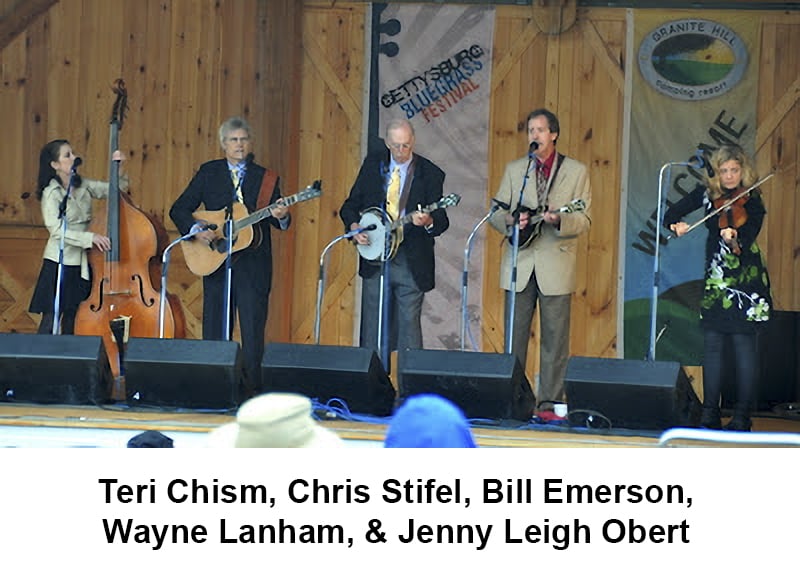
In 2010, Bill Emerson recorded his seventh solo album, titled Eclipse. The liner notes on this album introduce the supporting cast as follows: “Complementing the instrumental work, three of the backing musicians each take a turn at the vocal helm: Marshall Wilborn, Tom Adams and, new to a Bill Emerson project, fiddler Jenny Leigh Obert. And for the first time in nearly nine years, Lynn Morris comes to the microphone, singing harmony on ‘Jesse James.’ Bill’s banjo guest on Southern, Janet Davis, returns for the banjo duet, ‘Espanol.’ Jimmy Gaudreau and Chris Henry share the mandolin duties throughout the album and Chris Stifel plays guitar on ‘Don’t Come Around.’”
Jenny Leigh Obert had been hired to be a member of Sweet Dixie when she moved from Nashville to Middleburg, Virginia early in 2010. She recalls, “I was in the band less than a year when we went into the studio to record Eclipse in the winter of 2010.” Regarding the experience of recording with Emerson, Jenny recalls, “Bill loved to record. It was his favorite thing to do. He didn’t want to rehearse much. He wanted you to listen a few times and get the feel of song and then let it all come out when you recorded. He was so positive in the studio…fun and upbeat. He knew how to bring the best out of people. He also liked to record live to get that feeling. In the studio the bass was isolated and the rest of us were in one room with partitions between us. We would track live and then go in and overdub only if we needed to.”
Bill Emerson is well known for his song “Home of the Red Fox” and producing a solo album of the same name. Stelling Banjos inlayed a Red Fox on Bill’s banjo and produced a Red Fox model. Although Bill was not a fox hunter himself, Jenny Leigh Obert is a fox hunter who raises fox hounds and rides horses. She said, “Bill was fascinated with the fox and the hounds and liked to talk about it. He liked the history, the farmland, and the gentleman fox hunter vibe. He liked the sophisticated and clean-cut side of life. Things that he liked he described as being a ‘class act.’ He held himself to the highest standard.”
Jenny remembers Bill Emerson most fondly for the encouragement that he gave her. She said, “He would say things to me like, ‘I have heard something in your playing that I have not heard before. You have been tapped on the shoulder to do this, you need to run with that.’ He was so positive that he made me feel like I was really special at music. He encouraged me to do my own thing. He liked traditional bluegrass, but he also wanted their to be an edge to it.”
When Jenny left the band in 2012 to move back to Nashville, Emerson told her, “Don’t be one of those people who goes to Nashville and shrivels up. Go there and be who you are. You are great, don’t play small. Don’t be intimidated by anything that you encounter down there. You are one of the greats.” Jenny said, “He was a mentor to a lot of people. He was handing down his power to other musicians.”
The Touch of Time
The next Bill Emerson and Sweet Dixie album, The Touch of Time, was recorded in 2011 and released in 2012 by Rural Rhythm. For this recording, the Sweet Dixie band included Wayne Lanham (mandolin), Teri Chism (bass), Chris Stifel (guitar), and Jenny Leigh Obert (fiddle).
Chris Stifel, who had performed with Jimmy Gaudreau in the band Country Store during the 1970s said that sometime in 2010 he got a call from Emerson asking if he wanted to audition for the band. Stifel said, “I went to his house and auditioned with the band and Bill hired me.” Stifel remembers that one of the highlights of his time with the band was having the opportunity to play twin banjos with Bill in the band’s live shows. Regarding his time with Sweet Dixie, Chris said, “It was wonderful. I enjoyed it completely. Playing with Bill gave me a lot of respect and credibility. I never had a harsh word with anyone in the band. They were all nice folks. It was a great source of pride and pleasure for me.”
Chris Stifel said that Bill Emerson’s wife, Lola, had shared with him an email that Sonny Osborne had written to Bill Emerson on the 27th of November 2012. Evidently, Bill had sent Sonny some videos of Sweet Dixie performing. Sonny’s response in the email was “I got the videos you spoke of, and am totally impressed with your band. Guitar guy has a great wrist. Reminds me a lot of Dale Sledd, of which I consider to be the best guitar player we had. Totally impressed with your playing too…You’ve outlasted us all. Your playing has not dropped a step and in fact may be improved with age. I mean that. Not so with the rest of us!!! Your band LOOKS like professional people too. They dress in clothes that doesn’t look like they were ‘slept in’ the night before…They also present themselves well on stage too, like they know what they’re doing.”
Dancin’ Annie
After working on a recording with Byron Berline in 2012, Emerson recorded again with Sweet Dixie in 2013. This album was titled Dancin’ Annie and was released in 2014 on Rural Rhythm. Once again, Wayne Lanham was on the mandolin, Chris Stifel was on guitar, and Teri Chism played the bass. The fiddling on this recording was done by either Rickie Simpkins, Pat White or Wally Hughes. Wally Hughes also played the Dobro on one song.
As with the last ablum—The Touch of Time—the title cut of Dancin’ Annie was a Chris Stifel original. Other songs on this recording included “The Only Wind That Blows” by Liz Meyer, “Days When You Were Mine” by Leroy Drumm and Anthony Luciow, the Emerson original instrumental “State Line Ride,” “Will A Light Be Shining Bright Within Your Soul” by Warren Michael Garris, “A Face From Another Place” by George McCeney, “Two Hands On The Wheel” by Nancy Pate, “Thanks Him For The Miracle” by Thomas Mosie Lister, “Walkin’ After Midnight” by Alan Block and Don Hecht, “Whistle Stop” an instrumental by Wayne Lanham, and “He Knows My Name” by Rob Mills.
The Gospel Side
The final Bill Emerson and Sweet Dixie recording was a gospel recording titled The Gospel Side of Bill Emerson and Sweet Dixie and was released in 2015. For this recording, the core group was once again Bill Emerson (banjo), Wayne Lanham (mandolin) and Teri Chism (bass). Other musicians who appeared on this recording were Chris Stifel, Randy Waller, Wayne Taylor, and Tom Adams (guitar), Jimmy Gaudreau (mandolin and guitar), Shelby Gold, Rickie Simpkins, Jenny Leigh Obert, Steve Thomas, and Pat White (fiddle), Linda Lay (bass), and Dave Miner (Dobro).
Teri Chism said that there were so many different musicians on this recording because Bill selected gospel songs that he had recorded over the years with different configurations of the band and placed them on this recording. Regarding her time performing and recording with Bill Emerson, Teri said, “I loved every minute of it. He was a great forward-thinking band leader. After all he had accomplished, he was still a very down-to-earth person. He was fair, kind, and professional…a gentleman.”
In 2016 Bill Emerson decided to retire from performing live shows, but he did not give up recording. He started working with his son Billy on a new project and they released a very well-received single—a bluegrass cover of the Band’s “Ophelia”— that came out of those sessions. In 2019, Bill Emerson was also inducted into IBMA’s Bluegrass Hall of Fame. The next article in this series will cover the years from 2016 when Bill stopped performing up until is passing in 2021.
Share this article
1 Comment
Leave a Comment Cancel Reply
This site uses Akismet to reduce spam. Learn how your comment data is processed.
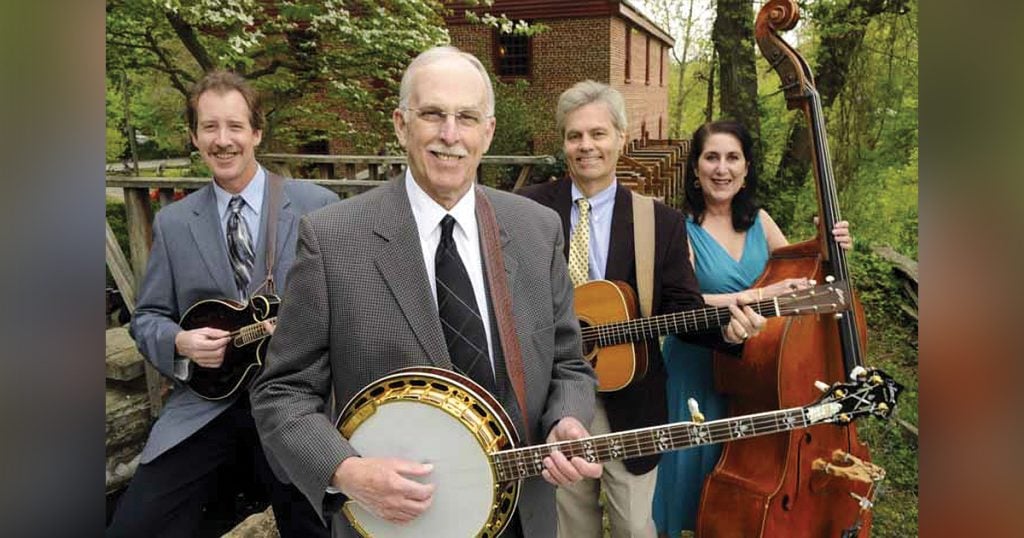
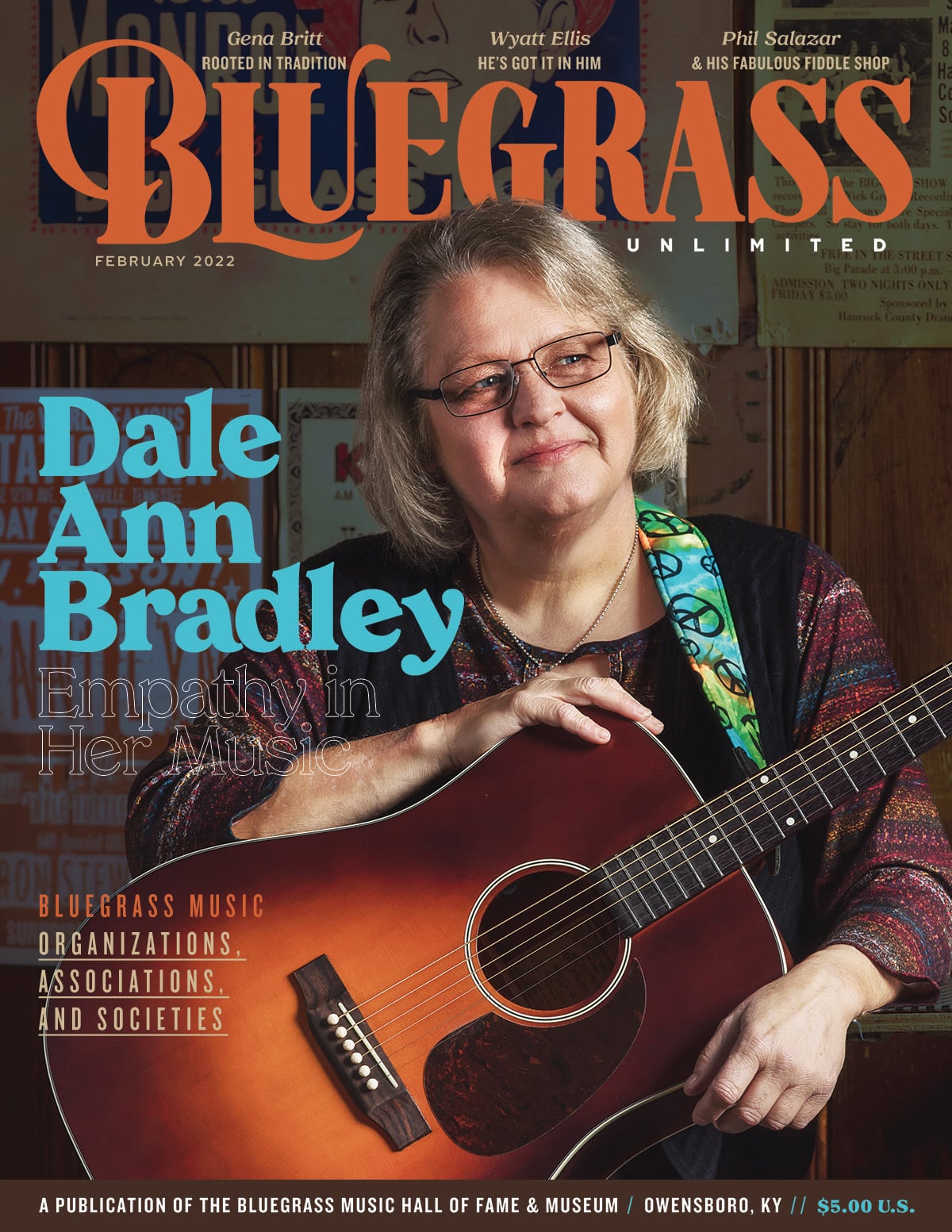
I saw Bill at the June 2008 Windgap festival where both Sweet Dixie and the Country Current band with Pat White and Frank Solivan played sets. They did some mixtures of the two bands on stage, a real treat.